New Zealand Canterbury News






















With a release date expected at the end of this month, one of the central goals of the reforms is to improve health outcomes and achieve health equity, particularly inequalities experienced by Māori, Pacific people and tāngata whaikaha (disabled people).
The next two years will see us drive improved outcomes and equity for these groups by focusing on the areas with the greatest opportunity for health gains.
Te Pae Tata reflects the following five priority areas for focused change:
1. Pae ora | Better health and wellbeing in our communities
2. Kahu taurima | Maternity and the early years
3. Mata pukupuku | People with cancer
4. Māuiuitanga taumaha | People living with chronic health conditions such as diabetes, heart disease, respiratory conditions, stroke and gout
5. Oranga hinegaro |People living with mental distress, illness and addictions.
As you know, these are areas where, despite the ongoing effort, inequities persist.
With an additional focus on climate change to protect the future health of our communities, our transformation will bring about the structures and settings to make meaningful gains in all these areas.
Jeremy Holman will start with Te Whatu Ora – Health New Zealand as Chief Infrastructure and Investment Officer on Monday 5 December.
Jeremy is currently the General Manager Infrastructure Delivery for Crown Infrastructure Partners, with responsibility for the delivery and oversight of $6 billion of major infrastructure programmes receiving New Zealand Government stimulus funding.
In taking up this role, Jeremy will be providing national leadership for the planning and delivery of capital projects across the motucurrently there are over 100 projects representing nearly $6.7 billion in funding, with $4.9 billion of that approved for delivery and the remaining for projects in the pipeline and yet to be approved.
Jeremy will advise the Board and the Government on an approach to capital planning and prioritisation that takes a medium to long term view of population and health service needs while also ensuring the timely delivery of projects currently in progress. Jeremy will partner with iwi, construction sector partners and clinical and service leadership to ensure health assets are fit for purpose now and in the future.
Te Whatu Ora | Health New Zealand
Chief Infrastructure and Investment Officer, Jeremy Holman (effective 5 December 2022)
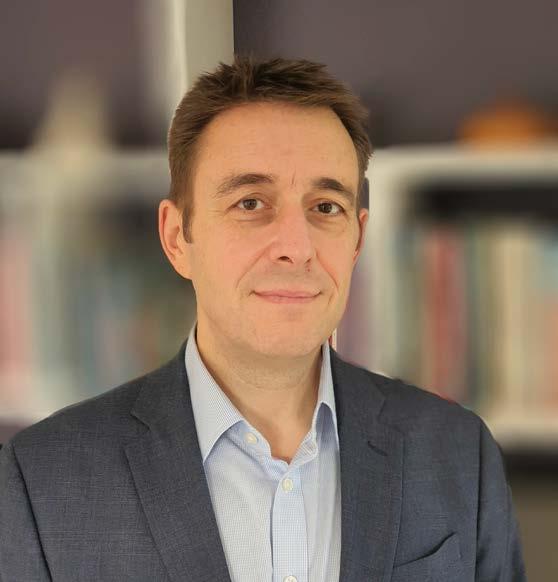

There’s a lovely story on page 18 about Westpac helicopter moneyboxes donated to the Child Health division on the Christchurch campus. The moneyboxes are gifted to child patients who arrive by helicopter. Many of the kids are not conscious so are unaware or don’t remember their journey. When they recover, the moneyboxes help them understand how they travelled to the hospital.

Last Friday was World Allied Health Professions Day. Our more than 2000 Waitaha | Canterbury Allied Health kaimahi (staff) are invaluable and every day make a huge difference to the health and wellbeing of our communities. They are our audiologists, pharmacists, dental therapists, physiotherapists, psychologists, occupational therapists, dietitians and more; making up around 49 different professions here in Waitaha.
To mark the day, an ‘awards ceremony’ was held via Zoom. Individuals and teams were nominated by their peers over six categories and the winners were selected by the directors of Allied Health. Congratulations to the nominees and winners, and a huge thank you to all Allied Health workers for your phenomenal mahi.
You can read more about the awards on page 7

This is week five of the Pānui te reo Māori akoranga (lessons). Have you been following these and incorporating more te reo into your everyday conversations? There’s something for everyone in these short lessons and if you haven’t given it a go yet, I recommend that you go back and look at the previous akoranga.

Karawhiua! If you don’t know what that means, take a look at today’s lesson on kīwaha (idioms) on page 9
Have a great week. Kia pai tō koutou rā
Peter Bramley
Interim Regional Director Te Wai Pounamu Interim District Director Waitaha Canterbury and Te Tai o Poutini West Coast
In 1992, Suzanne Stevenson gave birth at 30 weeks to a premature baby girl in Christchurch Hospital. She and her little one were cared for by the doctors and nurses at the time and her daughter has recently celebrated her 30th birthday. To ‘pay it forward’ and acknowledge the ongoing work that the staff do in the Neonatal Intensive Care Unit (NICU), Suzanne recently donated some beautiful items she knitted for the babies; thirty knitted garments donated to mark the 30 years since her daughter was born at 30 weeks.
The families with babies in NICU who receive these gifts will be so grateful. Many thanks to Suzanne for her generosity.

New Zealand has an extensive array of native bird life including the highest concentration of flightless birds in the world. How much do you know about our feathered friends?
1. What has a genetic study of Moa fossils identified as the primary cause of their extinction?
a. Volcanic eruptions
b. Climate change
c. Starvation
d. Humans
2. How many living species of kiwi are there?
a. One b. Three c. Five d. Seven
3. What New Zealand native is considered to be the most intelligent bird in the world?
a. Pukeko
b. Kea c. Tui d. Kākā
4. Which ‘fact’ is true of the kākāpō?
a. They can climb trees
b. They can live to be more than 90 years old c. They’re nocturnal d. All of the above

5. Which of the following native birds can fly?
a. Pīwakawaka
b. Kororā
c. Auckland Island Teal d. All of them
6. What is unusual about the hihi (stitchbird)?
a. They cannot fly for more than one minute at a time
b. Their eggs weigh more than half their body weight
c. They are the only bird that sometimes mates faceto-face
d. Originally flightless, they evolved to fly around 250 years ago
7. True or false, kiwi have nostrils at the end of their long beaks?
a. True
b. False
8. The tiny mohua (yellowhead) appears on a New Zealand bank note. Who is the human on the other side of that money?
a. Kate Sheppard
b. Sir Ernest Rutherford c. Sir Edmund Hillary
d. Sir Āpirana Ngata
9. Every year, New Zealand Forest and Bird run a public vote for people to choose the ‘bird of the year’. What was special about the 2021 winner?
a. It was extinct (moa)
b. It also won in 2020 (kākāpō)
c. It was a bat (long-tailed bat)
d. It was an introduced species (magpie)
10. How many species of bird are native to New Zealand?
a. More than 200
b. More than 500
c. More than 700
d. More than 1000
Check your answers on page 24.

Friday 14 October was World Allied Health Professions Day.
Allied health professionals work in a huge range of settings including schools, private practice, community health centres, laboratories and in hospitals. They comprise more than 20 percent of the total Te Whatu Ora workforce and include a wide range of specialties.
Te Whatu Ora Chief Executive Margie Apa says the breadth and depth of the skills of these clinicians is impressive and that the health system could not function without them.
“Allied Health is a term that includes specialties such as dietitians, social workers, occupational therapists, pharmacists, anaesthetic technicians, oral health therapists, medical imaging technologists and many other clinical professions.
“This workforce plays an integral role in providing health services to patients in our hospitals and people in the community.
“World Allied Health Professions Day is a fitting time to pause and acknowledge the contribution of this important workforce.”
To celebrate here in Waitaha Canterbury, some of our hardworking Allied Health kaimahi (staff) were recognised with awards. Nominated by their peers over six categories, the directors of Allied Health selected the winners who were acknowledged during the online event.
Executive Director of Allied Health, Jacqui Lundy-Johnstone and Interim Executive Director of People and Capability, Jo Domigan, presented the awards.
›
Allied Health winner: The Emergency Department Health Team
› West Coast winner: The Northern Allied Health Team
› Science and Technology winner: Virology/Pandemic Response Teams
› Special Commendation: Community Dental Service.
›
Allied Health winner: Casey Harvey (Allied Health Consultant Adult Inpatient Group, Specialist Mental Health Service (SMHS)
› West Coast winner: Vicky Youngman (Acting Associate Director of Allied Health Scientific & Technical, Clinical Leader Integrated Nutrition Services)
› Science and Technology winner: Rodger Linton (Section Head, Virology / Serology)
› Special Commendation: Rachel O’Sullivan (Project Manager, Respiratory Redesign Project) and Mary van Schalkwyk (Radiation Therapist seconded to support COVID-19 preparedness of the scientific and technical workforce).
Category 3 – Exceptional Kaiawhina (assistance)
› Allied Health winner – Steve Southcome (Allied Health Assistant in Whaikaha, the Forensic Service for Adults with Intellectual Disabilities in SMHS)
› Science and Technology winner: Radiology Bookings / Administration Team.
Category 4 – Innovative Practice
›
Allied Health winner - Jolene Hunter and the Health Welfare Team at the Canterbury Hauora Coordination Hub.
›
Allied Health winner - Liz Love, Expert Diabetes Dietitian (Gestational Diabetes Mellitus Pathway)
› Special Commendation - Lysa Coburn and Ann Johnson Women's Health Advanced Physiotherapists.
Category 6 – Rising Star
› Allied Health winner – Kirsty Gildea (Occupational Therapist)
› Science and Technology winner: Alistair Edwards (Medical Imaging Technologist )
› Special Commendation - Tylee Beaumont (Clinical Manager Social Work, Older Persons’ Health and Rehabilitation Community Team).
Congratulations to all the nominees and winners. Thank you to all the Allied Health professionals.
529 Garage is a free and easy-to-use portal that enables you to register your bike details, such as photos, descriptions and serial numbers, and helps Police return stolen bikes to their rightful owners. Once registered, you can obtain a unique 529 Garage code on a tamper-resistant shield that sticks to your bike.
Christchurch City Council staff will be stationed at two locations on the Christchurch campus on Wednesday 19 October from 12pm-1pm so that kaimahi who have pre-registered bikes on 529 Garage can collect their free shields.
› The Great Escape Café (1st floor of Christchurch Hospital)

› Waipapa Atrium / reception / café area
Visit the Council website to pre-register your bike and collect your shield on Wednesday (normally $15 but free for a limited time). If you work at other locations or can’t make this time, you can get your free shield posted out to you.
“We’re excited to partner with the Council to make it easier for our staff to sign up to this great initiative,” says Richard Seigne, a member of the Christchurch Campus Bike User Group.

“Cycling is a climate-friendly option that's good for the mind and body. We encourage active commuting to work where it is possible for our team and being part of 529 Garage adds an extra layer of security for those who choose to cycle to work.”
“And we have more exciting news for our climate friendly commuters - a large space in the undercroft of the Waipapa building is being converted to secure, weatherproof parking area for bikes, e-bikes and scooters, with internal access to the lower ground floor changing rooms. More information will be coming soon!”
“529 Garage offers people a simple, free way to register their bicycles and we’re keen to get as many bikes registered as possible,’’ says Council Transport Operations Manager Stephen Wright.
“In other communities where 529 Garage has launched, authorities have noticed a promising decline in bike thefts. For example, in Vancouver, Canada, there was a 40 percent drop in bike thefts in the four years after 529 Garage’s launch.
“We’re hoping it will have the same impact here. We’re trying to encourage active modes of transport and we don’t want bike theft deterring people from going places by bike,’’ says Stephen.
Using particular types of lock also makes a huge difference – use a good quality D-lock or thick chain lock as cable locks make thieves’ jobs far too easy and if you use one of these, it is more likely that your bike will be targeted.
E ngā ringa raupā, nāia āku owha ki a koutou.
Greetings to all of you hard workers.
This week we will learn about kīwaha which are colloquial sayings or idioms that are frequently used in te reo Māori, most commonly in spoken language rather than written. There are many different types of kīwaha, some of which require a level of understanding of te reo Māori, however there are many simple kīwaha that may be used as stand-alone sayings which require little to no understanding of te reo Māori. To illustrate this, we will explore a few common idioms in English and their Māori equivalents.
Health-related words

Me he te! Like a boss!
Ao noa, pō noa All the time
Ehara i te tī You only live once (YOLO)
Karawhiua! Give it your all
Wēkeneru Holy moly
Tuhia ki tō rae Don’t forget
Tau kē Awesome
He reka! Yummmm!
Tō ihu! Butt out, stop being nosy
He whakapātaritari – A challenge Challenge yourself and your hoa mahi (work colleagues) to use one of these kīwaha each day for the upcoming week. See how many times you can use each kīwaha on any given day. Perhaps you could start a friendly whakataetae (competition) in your workplace. Karawhiua!
E mihi ana ki a koutou katoa, ā, tukuna te reo kia rere!
Thank you all and let the language flow!
If you have any questions or feedback, please make contact via the email below. Hauora.Maori@cdhb.health.nz
On 13 October 1975, at the age of 79, Dame Whina Cooper ONZ DBE of Te Rarawa arrived on the steps of Parliament in Wellington, having led the land march from Te Hāpua in the far north. The march was a protest against further loss of Māori land and the group was unified under the slogan of “Not one more acre”.

Pekin Chicken, 9 months

Hawk really likes pats and to sit in my lap. Hawk lays an egg almost every day.
Jennifer Fahey, Medical Laboratory ScientistVirologyMiniature Schnauzer, 8 years old Cooper's favourite hobby is anything to do with food.

He has perfected the art of looking like he hasn't been fed and fooling the unwary into giving him treats!
Jane Powell, Health PromoterFox Terrier / Beagle cross, 1½ years old
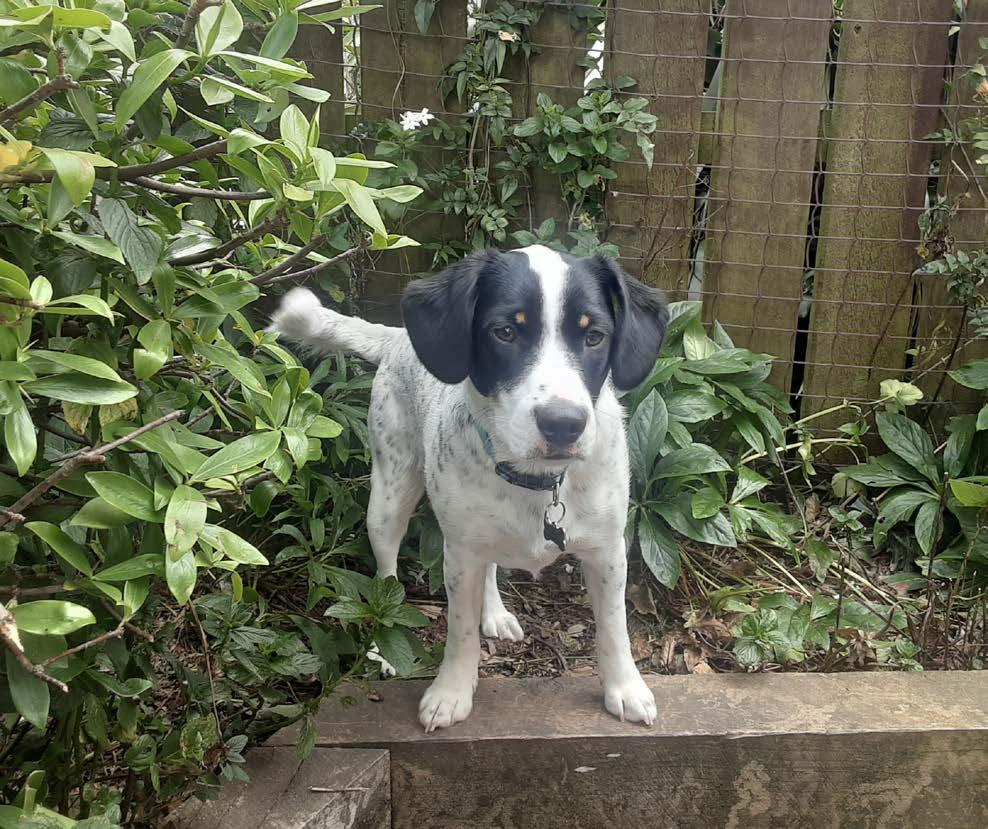
I keep all my workmates amused and amazed about all the things my dog chews to bits.
Dena Cowen-Willis, HealthLearn Programme ManagerCavalier King Charles Spaniel, 8 years old

Harry loves going for walks but not on the beach (the woods or forest are his happy place). He loves chicken and thinks the name ‘king’ is his title (acts like a king in the house).
Long-haired tabby rescue cat, 4 years old

George enjoys the following activities:
• Resting
• Lying down
• Sleeping

He is a connoisseur of fish flavoured food items and his favourite pastime is trying to shred the living room couch. He is much loved.
Rebecca Barrell, Infection Prevention & Control Clinical Nurse SpecialistWe want to meet your pet(s) – cat, dog, horse, alpaca, rat, ferret, rabbit, fish, bird, donkey – it doesn’t matter! You love them and now is your chance to show them off in a new regular series.
To submit your pet(s), click on this link (you must do this from your work email address). If you have any difficulty with the form, you can email communications@cdhb.health.nz
We are so excited to meet your pets over the coming weeks.
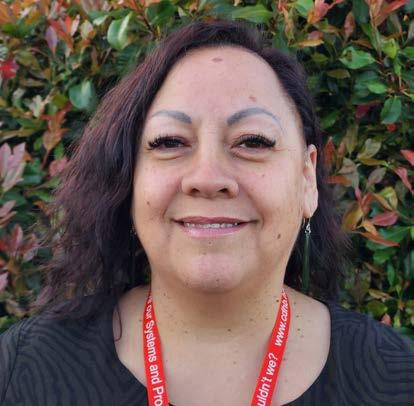
Whakawhanaungatanga – establishing connections, manaakitanga – being respectful and kind, mōhiotanga – being knowledgeable and understanding. I work with a variety of incredible staff who are innovative and energetic in being able to improve treatment pathways for people requiring mental health services. My role includes supporting staff in their ability and capacity to create change for a better place for people who at times feel stigmatised, marginalised, and vulnerable. From a cultural perspective, working as part of a team in ensuring equity for Māori occurs and developing strategies to embed cultural practice as a means of being effective and fair in our delivery of care and working in collaboration with other agencies to improve recruitment of Māori into SMHS. I chose to work in this field to initiate and influence change for the improvement of Māori tangata whai ora and their whānau who journey through the mental health system. Mahia te mahi, hei painga mo te iwi – Work for the betterment of people. I like the ability it gives me to create opportunities which influence change and being around like-minded people who have the tenacity and courage to be bold and not held back by others' doubts. Engaging with and motivating staff to extend themselves to become proficient then expert in their clinical and cultural abilities and practice.
I would say, haere mai and welcome, come into the area of mental health and make a difference. My advice would include being open to the many wonderful opportunities that exist in our area of health. Being authentic is vital and caring about the people who we are responsible for and being inclusive with their family-whānau. If you are Māori, there are several exciting projects and strategies that are being embedded into SMHS to create excellent work environments for Māori to work in a tikanga and mana influencing manner.
My older brother Barclay inspires me… because of his compassion, love of life, truth to who he is and clinical knowledge and wisdom he has shared with me. This will always be a reminder of the mana he carries and his influence on my life and career.
What do Waitaha Canterbury's values (Care and respect for others, Integrity in all we do and Responsibility for outcomes) mean to you in your role?
It means being kind, open, transparent, honest, listening to and supporting staff, tangata whai ora, whānau, and anyone who I connect and interact with. These values resonate with me because they reflect who I am as a person as well as demonstrate how we should all be working within our teams and working environments.
If you could be anywhere in the world right now it would be…
Uawa – my tūrangawaewae. Tolaga Bay is where my whānau and I can be reenergised and connect to our whenua.

Who would you want to play you if there was a movie made about your life?
My daughter – Nasharn, because she would add drama and make it more interesting.
What are your hobbies/interests outside of work?
Whānau time, spending time with my moko babies, Meihana and Maraina. Walking with my hubby and our dog Duke, weekends away, reading and quiet time.
If you would like to take part in this column or would like to nominate someone please contact Naomi.Gilling@cdhb.health.nz.


My 10 year-old son and I headed to the hospital for him to have an MRI scan. We are unfamiliar with the hospital and didn't know where to go. Your friendly wayfinding volunteer greeted us at the door and kindly pointed us in the right direction with a smile on her face. We then found our way to Radiology reception. The lady there was so lovely. Rather than direct questions at me, she asked my son the questions first. This was, after all, about him! She patiently took down his answers and pointed us to a waiting area down the hall – again, with a big smile on her face. We took our seats down the hall for just a few minutes before the radiographer came to introduce himself. I didn't quite catch his name but, my goodness, what an asset to your team he is! He was very friendly and put my son at ease immediately. He then took us in to see the machine and explained it would be noisy and gave my son an idea of what he could expect. My son was curious but cautious. Your amazing radiographer then explained to my son how some materials are attracted to the magnet and some are not. He let him see for himself the way a pen would react near the machine versus some chunk of metal that was not attracted to the magnet. My son was enthralled and was then excited to get the process underway. The Simpsons was projected to keep him entertained throughout the process and he got to watch the screen on a mirror. Such cool science! Overall this was such a brilliant experience. Your team are just fantastic. They treated us so kindly and were so patient that I wanted to write and let you know of our experience. Special kudos to your radiographer... I wish I had caught his name.
I would like to express my gratitude to the staff at Christchurch Accident and Emergency Department for their consistently conscientious care and hard work. After contracting COVID-19 early in 2022, I found myself there regularly over a period of five months (sometimes more than once a week), with a COVID-related health complication. This was a very busy time throughout the country with COVID-19, winter illnesses and other health needs. I am so thankful that I was always seen quickly and was consistently treated so well. Generally, I was admitted late at night or in the early hours of the morning. Staff must have been very tired, often at the end of shifts, and they were always extremely busy. I received care that was routinely professional, empathetic and warm. I was always treated with dignity and kindness, never as just a ‘health issue’. In my opinion, it takes a special person to cope with such long hours, busyness and such a variety of health issues. This department is full of firstclass staff. I was so very thankful to be living in Christchurch with such a wonderful medical team. Thank you all for your diligent work during a time of great pressure.
Two of my children were seen at Hornby Dental this morning by Jemma. I want to pass on my thanks. Jemma did an amazing job. The children felt empowered after getting fillings and their confidence was boosted in taking better care of their teeth and cleaning regularly to keep those bugs away! Jemma was great at explaining what she was going to do. She was gentle and did a
thorough job and she was very cheerful and friendly which took all the stress away from what can be a stressful time. I’m a single mum and our family is going through some really difficult times, which has affected many aspects of everyday life, including teeth brushing. The care Jemma gave us today was exactly what we needed and really means a lot! It’s great to see the future of dental care in such great hands. Thank you!
Occupational Therapy, Burwood Hospital
I was successful today with my driving assessment. I want to acknowledge the awesome interaction that all of the team has provided to me. Even if for any reason I had failed the test, my respect would have remained. Carry on doing the wonderful work for your patients.
Intensive Care Unit (ICU), Christchurch Hospital and Spinal Unit, Burwood Hospital
I cannot fault the service given to me by the surgeons, doctors and nurses. All staff gave me good, prompt advice and were friendly and helpful. Emergency Department (ED), Christchurch Hospital
Great experience. Treated like a queen. I couldn’t fault the service from nurses and doctor. Their manner was impeccable.
Nathan, ED, Christchurch Hospital
ED Nurse Nathan was so kind to me. He helped me calm down from an anxiety attack. He was able to understand how my brain works and get me back to my right mental state of mind. Thank you Nathan.
Maria, Christchurch Hospital
That Maria! She is amazing, super helpful and made my visit to the hospital a lot less stressful.
Ward 11, Christchurch Hospital
All the staff on Ward 11 were really great. Very helpful and professional. Special shout out to WellFood staff member Eve for helping with my special food diet and my vegan preferences. The vegan ice cream was really great!
Iain Ward, Oncology, Christchurch Hospital
Just a note to say thank you so much for your exceptional care whilst I underwent treatment for rectal cancer with you. I have felt totally supported the whole way and will be eternally grateful. You are a credit to your profession and Te Whatu Ora. My everlasting thanks and respect to you all!

To the whole team of Ward 24. Thank you one and all for the care you gave me while I was in hospital recently. Despite a busy day, everyone always had a smile and kind words. Best wishes.
I had a wonderful experience while in Ashburton Hospital recovering from an accident. The staff were all outstanding. The food was delicious and ample. I was treated at all times with courtesy, kindness and support.
ICU, Christchurch Hospital
We cannot say enough thank yous to the whole team in ICU. Dee, Jan, Sharvi are a credit to the team. They knew our names and did all possible to comfort us. Also the St John volunteers, they are an asset to the shirt. The entire nursing staff in ICU are an absolute credit to the hospital. Their calm, caring voices certainly helped in such a stressful time. Priscilla and her surgical team were also amazing. Going beyond a typical work day to save our mother. Again, we cannot say enough thank yous. Katie, Tara and Sarah are three nurses who we remember. In such a traumatic situation for us, they kept us calm and informed. They checked on us as well as caring for our mum. The entire ICU department is wonderful.
I don’t really remember a lot, but I remember how good the nurse I had in ED was. My partner told me her name was Tracey. I felt like a dog’s breakfast from what my partner has told me and Tracey did everything she could to help. I want to thank her so much for her care!

A backlog of ‘exception sheets’ is a thing of the past in Christchurch Hospital’s Neonatal Intensive Care Unit (NICU) thanks to a joint effort.
NICU has a large number of staff including registered nurses and hospital aides, both casual and permanent, and the demands of the unit necessitate the need for frequent alterations on Microster, says NICU Administrator Lynnaire MacDonald.

“In the event that a change or amendment cannot be made on Microster because a particular week is being processed by Payroll, this results in what is known as an ‘exception sheet’ being required.”
NICU was experiencing a backlog of exception sheets that still needed to be processed which resulted in delays in payment to staff. This prompted conversations with the Exception Reduction Project team to see what could be done to reduce the need for exception sheets and ensure staff are paid correctly, she says.
The team was formed to identify the many factors contributing to an increased number of exception cases and areas of improvement that need to be explored within People and Capability and across the organisation.
NICU Administrators Lynnaire MacDonald and Liza MacDonald worked with team members Project Specialist Amy Reinke and Business Improvement and Quality Manager Janine Kennedy from the People and Capability HR Shared Services team.
After working closely with NICU administration it was identified through process mapping that historical complexities around communication could be simplified, says Amy.
“Collaborating on the how, when and why was crucial in putting in place changes that would be beneficial to all teams.”
Working alongside multiple stakeholders has been key to both short and long term wins in numerous identified areas of improvement, such as improving the exception service in Max or establishing better
data analysis in order to more effectively manage and reduce the exception backlog, she says.
Lynnaire MacDonald says the ability for NICU to work in partnership with Amy and Janine was beneficial for both teams. The Exception Reduction Project team was able to see first-hand the challenges of rostering a large department like NICU and the team was able to provide perspective and procedural knowledge.
“We effectively ‘met in the middle’ to develop strategies that could be actioned immediately. Through targeted communications and a shared inbox dedicated to rostering queries, we have been able to reduce the number of exception sheets that are submitted weekly and our NICU staff have been incredible in ensuring they communicate any Microster discrepancies immediately. It’s so important that we make sure the staff get paid accurately, and this has helped a great deal.”
Amy says she would like to extend a sincere thank you to Neonatal Nurse Manager Debbie O’Donoghue and the NICU Administration team for their transparency and willingness to work to make changes within their own rostering processes for the benefit of not only the Neonatal team as a whole, (medical staff and administration staff) but also for the team in Roster Support.
“Many lessons were learned on both sides, and the NICU Administration team is in a better position to enter roster changes more frequently and efficiently. As part of the Exception Reduction Project team’s ongoing contact with other departments, we are using NICU as an example of success through shared accountability.”
Debbie says despite how busy the Neonatal Service is, staff are always wanting to do their best.
“This joint project with the Exception Reduction Project team and our very small Neonatal Admin team is an example of that and is making a significant positive change in the reduction of exception sheets and the management of accurate rostering and timeliness of accurate pay for staff.”
The positive outcome with NICU emphasises the importance of collaboration and an ongoing partnership, which are key ingredients to the success of the Exception Reduction Project, Janine says.

Our journey to improving the buildings and facilities at our Hillmorton campus (Te Huarahi Hou) continues, and this month we highlight some the key things you need to know in our latest Te Huarahi Hou update, including:



› An overview of timelines for all of the current development projects
› Updates on progress of the buildings which will be home to the services moving from The Princess Margaret Hospital next year (it’s taking shape!)
› Our new look intranet hub and the form we’ve created for you to easily ask us your questions
› A reminder to spring clean our areas now when we can
› And we take a walk through the soft furnishings that will be bringing our cultural narrative to life.
The exterior of building 14
One of the bedrooms in building 12 starting to take shape
An artist’s impression of the soft furnishings bringing our cultural narrative to life in the buildings

Two initiatives in older persons’ health are supporting staff to provide the best possible careweekly meetings about long-stay Burwood Hospital patients and an innovative change to the hospital’s digital information screens.
This particular Older Persons Health and Rehabiltation (OPH&R) meeting happens weekly and involves representatives from the community teams, social work, inpatient clinical leaders and planning and funding, says Director of Allied Health Claire Pennington.
“All patients with a long length of stay are discussed, with nursing directors bringing information from their clusters for discussion. In addition, any patient requiring complex discharge planning or with unusual barriers to discharge can be brought to this forum for advanced problem solving, regardless of their length of stay.”
The meeting aims to ensure that there are clear plans in place for each patient’s care journey, including discharge planning, and that wards are supported to escalate barriers to discharge early. Where length of stay is long, the reason for this is understood, challenged and solutions to barriers sought by the team.
“By involving community clinicians and planning and funding the team ensures that the question ‘why not home, why not today?’ is always considered as these groups are able to challenge why the patient remains in hospital,” says Claire, who chairs the meetings.
This meetings have been successful in identifying where barriers occur that can be avoided, enhancing joint working and creating a ‘pull’ from community-based services, enhanced support for ward teams and the opportunity for the team to challenge the status quo and offer ideas.
“Where placement or return to a care facility is involved, the Gerontology nurse specialists become aware of the patients and work alongside the ward and the facility to ensure a seamless transfer, often avoiding re-admission due to issues resulting from leaving hospital after a long length of stay.”
This meeting also ensures that that the OPH&R senior leadership team stay closely connected to and support patient flow by assisting with escalating issues to other parts of the system, challenging perceptions and understanding issues at ward level, Claire says.

To aid decision making, OPH&R have added a fiveday discharge profile to its Hospital at a Glance (HaaG) screen.Previously only the ‘on the day’ discharge numbers were shown.
HaaG is a visual application designed to help with hospital patient flow, showing an array of information, such as the number of bed spaces and patients being discharged that day.
“This seemingly small change allows the senior leadership team to assess the discharge profile for the week, alongside estimated demand, Claire says.
“By having this information to hand and for several days in advance, the team are able to identify possible issues with patient flow and identify opportunities to avoid this creating problems.”
With pathways in to Burwood Hospital coming from multiple sources, the ability to foresee challenges has allowed the team to make adjustments to plans, escalate patient flow issues and work on solutions in advance rather than on the day.
While there are usually changes to the discharge profile over the week in general, the ability to monitor these changes and still see the likely output has been a valuable tool to ensure the system works at its best.
A different type of helicopter was spotted visiting the Christchurch Hospital helipad last week.
Instead of the usual metal flying machines with their loud rotor blades carrying precious cargo requiring our care, some cute-faced colourful helicopter moneyboxes tried it out for size.

The moneyboxes were donated by Westpac and will be given to child patients who arrive by helicopter.
“In the past we’ve given them to children who arrived by air retrieval but may be unconscious on arrival. When they recover the moneyboxes help them recognise how they arrived at hospital,” says Senior Operations Manager George Schwass.
“We had some stock of these in the past but hadn't had any for some time so I dropped into the Upper

Riccarton Westpac branch to see if there were any we could buy. Customer Service Representative Lynne Knight and her team were amazing and went the extra mile to find some and then to donate them to the hospital rather than have us purchase them.
“I’d like to thank Lynne, her team and the branch for their generosity with this very kind donation. The moneyboxes will go to the Child Health division for appropriate distribution to children who have used the service,” he says.
Lynne says, “We didn’t want to charge for these as this is such a lovely gesture for the children. We were just happy to help.”
Wednesday 19 October marks International Pronouns Day which aims to bring awareness to respecting, sharing and educating about personal pronouns.
The use of pronouns is not a new concept, however, as a an evolving diverse community, we have adapted the way we use them, says Mana Taurite | Equity, Diversity and Inclusion Workforce Development Partner Akira Le Fevre (he/him).
“As the world evolves, along with our diverse cultures, beliefs and values so must our language.”
Most people have grown up knowing the two binary pronouns - he/him or she/her and in te reo Māori there is just one pronoun ‘ia’.

“Many of us are comfortable using the pronouns he/ him or she/her but for many of our transgender or non-binary communities these pronouns come with a lot of pressure and stereotypes from society. They don’t feel comfortable using those binary pronouns, which is why some, but not all, may choose to use the pronouns they/them.”
When we use someone's correct pronouns, it creates a sense of comfort and empowerment, helping them feel secure and safe within their gender identity. It’s validating, a sign of respect, and reaffirms identity, Akira says.
“Studies have shown that correct pronoun use reduces the feelings of depression or dysphoria in gender-diverse communities. The simple act of using someones chosen pronouns can be both life changing and life-saving.”
Getting someone’s pronouns correct is the same as pronouncing someone’s name correctly. In a recent ‘Counting Ourselves Survey’ studies showed that over a third (36 percent) of trans or nonbinary participants had avoided seeing a doctor because they were worried about disrespect or mistreatment.
“We can remove this barrier with the small and simple act of using a person’s chosen pronoun. One of the easiest tools we can use to create a safe and inclusive environment is by adding our own pronouns to our email signature or name badge.
This demonstrates to our diverse communities that we are a safe person, that they can be open with us about their identity and in turn we can help create better health outcomes together.
“We know that change can be a bit of a journey to get our heads around, our trans and non-binary communities understand that we may not always get it right. It’s okay to get things wrong, the most important thing is to not make a big deal of it, simply apologise and keep trying.
“You will find that most people will be more than happy to have a kōrero about their identity, as long as we are being positively curious. At the end of the day, it is about listening and following the lead of the person we are working with.
For more resources and information around pronouns view a video from one of our kaimahi (staff) explaning why they use non-binary pronouns here, a great guide from Pride Pledge as well as an article on why pronouns are important.
If you need more support around pronouns or the rainbow diverse communities, there is a new Rainbow Diversity Workshop which you can register for on HealthLearn here or contact akira.lefevre@ cdhb.health.nz.

Niue Language Week was launched yesterday as part of the many Pasifika Language Weeks being celebrated in 2022.
This year’s theme for Faahi Tapu he Vagahau Niue -Niue Language Week - is Fakatūleva e Vagahau Niue mo e Tau Aga Fakamotu ma e Tau Atuhau, which means Sustain Niue Language and Culture for Future Generations.


Celebrating our Pasifika Languages is vital not only to promote the diversity of our kaimahi (staff) and the communities we serve in Aotearoa New Zealand but to make sure these languages and culture survive and thrive for generations to come.
This is even more imperative for our Niuean community as the Niue language has just been registered by UNESCO (United Nations Educational, Scientific and Cultural Organisation) as an endangered language. Many Niuean leaders and community groups are exploring strategies on how they can protect and sustain the Niue language and culture for the many generations to come.
We can all do our bit by educating ourselves about the diverse and rich Niue culture. Here are some audio files of simple words and phrases we can practice and use; Happy Niue Language Week, Hello To One Person, Formal Greetings To All, How Are You?, Thank You, Please, Goodbye To One, Goodbye to Three or More.
For more information about Niue Language Week you can visit the Ministry of Pacific People website here.
If you would like to be part of enriching the diversity of Te Whatu Ora Waitaha Canterbuy by sharing your Pasifika culture and lived experience please feel free to contact Workforce Development Partner, Equity, Diversity and Inclusion Akira Le Fevre by email Akira.LeFevre@cdhb.health.nz.
On Wednesday 26 October, the New Zealand Blood Service (NZBS) will operate its blood bank from a new location on the first floor of Parkside West, immediately on the left as you exit the Parkside West elevators.

The new location, shown by a red dot on the map above, will provide a purpose-built laboratory for the storage and supply of blood, blood components and blood products.
From a service perspective, all that will change is the location – Lamson tube processes remain the same, as does the telephone number – extension 80310 is best for calls and queries. Request forms can be sent by eFax 80159 or in pre-programmed machines by selecting 'Blood Bank'.
Our Transfusion Committee, chaired by anaesthetist Richard Seigne, has advocated for a facility that is fit for purpose and has worked with NZBS to bring about the new, improved Blood Bank.
Richard says the new Blood Bank looks great and is a huge improvement over the old one. NZBS staff will have more space, natural light and will be much closer to those areas needing blood in a hurry.
“Over more than a decade, many NZBS and Te Whatu Ora staff have contributed to seeing this move to fruition. The more central location will help the timely delivery of an average of 12 units of blood to our patients 365 days of the year (4,500 a year), saving time and the aching feet of our busy staffand that’s just a fraction of what NZBS provides.”
There will be a poroporoaki (farewell) for the old facility and a mihi whakatau (in this case, a blessing) for the new one from Ngāi Tuahuriri hapu, papatipu rūnanga for the land on which the Christchurch health precinct sits.
More, and some photos in next week’s Pānui.


Something for You is the Te Whatu Ora - Waitaha Canterbury employee benefits programme. The deals offered are from the New Zealand business community to say thank you for all that you do. Click here for more deals on Home Maintenance. You can find similar offers here
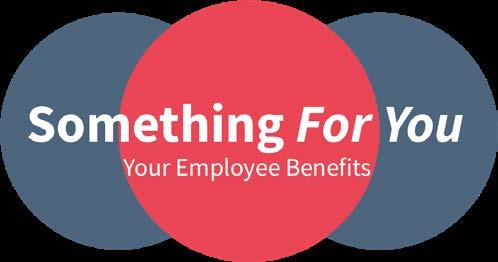
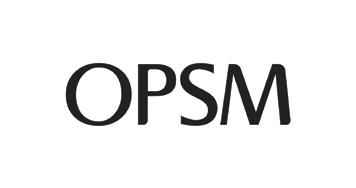
› $100 off a complete pair of prescription glasses and prescription sunglasses. Minimum spend $350.
› 20 percent off contact lenses
› 50 percent off Ultrawide Digital Retinal Scan. Offer ends 31/10/2022. See the Flyer here for discount code and terms and conditions.
Saunders & Co Lawyers - Christchurch Central, Hornby, Ferrymead

Up to 20 percent off some legal services - quote Waitaha Canterbury when enquiring, see more information here.

All Waitaha Canterbury staff who take out a loan with MTF Finance Carlton Corner will receive the option of $250 petrol vouchers, $250 off a new loan, or $250 retail vouchers - quote Waitaha Canterbury when enquiring. You can contact Hamish Newman at 021 440 985 to avail this offer.
Riccarton Shoe Clinic
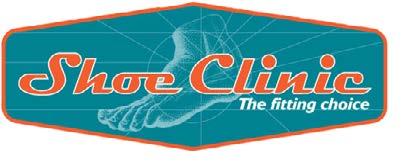
Riccarton Mall, 129 Riccarton Road
20 percent off all items instore (which are not already reduced) for Waitaha Canterbury employees and their immediate family membersshow your staff ID to redeem.
Level 3, BNZ Centre,111 Cashel Mall, Christchurch 8011
Cavell Leitch are happy to provide a 10 percent discount for legal fees across all of their service areas which includes: property, business, relationship property, immigration, resource management, employment, trusts and estates, and dispute resolution. The discount will not apply to disbursements such as government/council fees. Please show your staff ID to redeem.
The Microsoft Home Use Programme (HUP) allows you to buy Office 365 subscriptions or the latest version of Office, Visio and Project software to use at home at a substantial discount - see more information here Dell
Get exclusive discounts and benefits when you buy online with your work email address. Click here for detailed instructions on how you can redeem this offer.
• 20 percent discount on selected Dell RRP products - XPS, Alienware, Inspiron, Vostro, monitors and accessories
• Seven per cent discount on all Dell online store products including discounted items
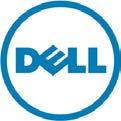


The theme this year is ‘your health, the health of your whānau’, with a range of interesting talks for you and your family from an excellent line up of speakers.

Topics include: the impact of ondemand food delivery services, social support as a source of resilience, accessing diabetes technology, a heathy digestive system, preventing dementia, and more.
When: 5.30pm – 7.30pm, Wednesday 26 October (doors open at 5pm for refreshments)
Where: Manawa Foyer, 276 Antigua St, Christchurch OR online
Information on speakers and topics here.
Registrations essential – link to register here
Your health, the health of your whānau Come and join us for an evening of talks from Canterbury researchers who are improving healthcare for us all. Registration essential.
Wednesday 26th October, 5.30pm – 7.30pm Attend in person at Manawa Foyer, 276 Antigua Street or join us online.

Māia Health Foundation’s latest e-newsletter is out now. Read about the foundation’s fundraising for Waitaha Canterbury's new Child, Adolescent and Family Mental Health outpatient space and much more here.

1. d. Humans (through hunting and forest clearing)
2. c. Five

3. b. Kea
4. d. All of the above
5. a. Pīwakawaka (fantail). Kororā is the little penguin and the Auckland Island Teal is a flightless duck
6. c. They are the only bird that sometimes mates face-to-face
7. a. True – and this is the only bird on earth with this feature
8. b. Sir Ernest Rutherford (the $100 bill)
9. c. It was a bat (long-tailed bat)
10. a. More than 200


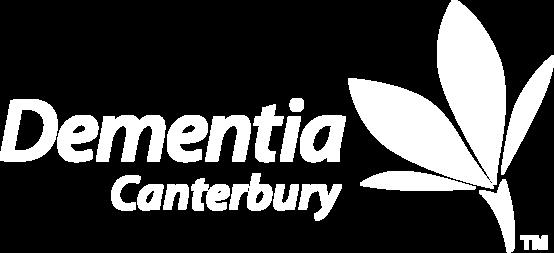

brain health – Managing stress
Health


